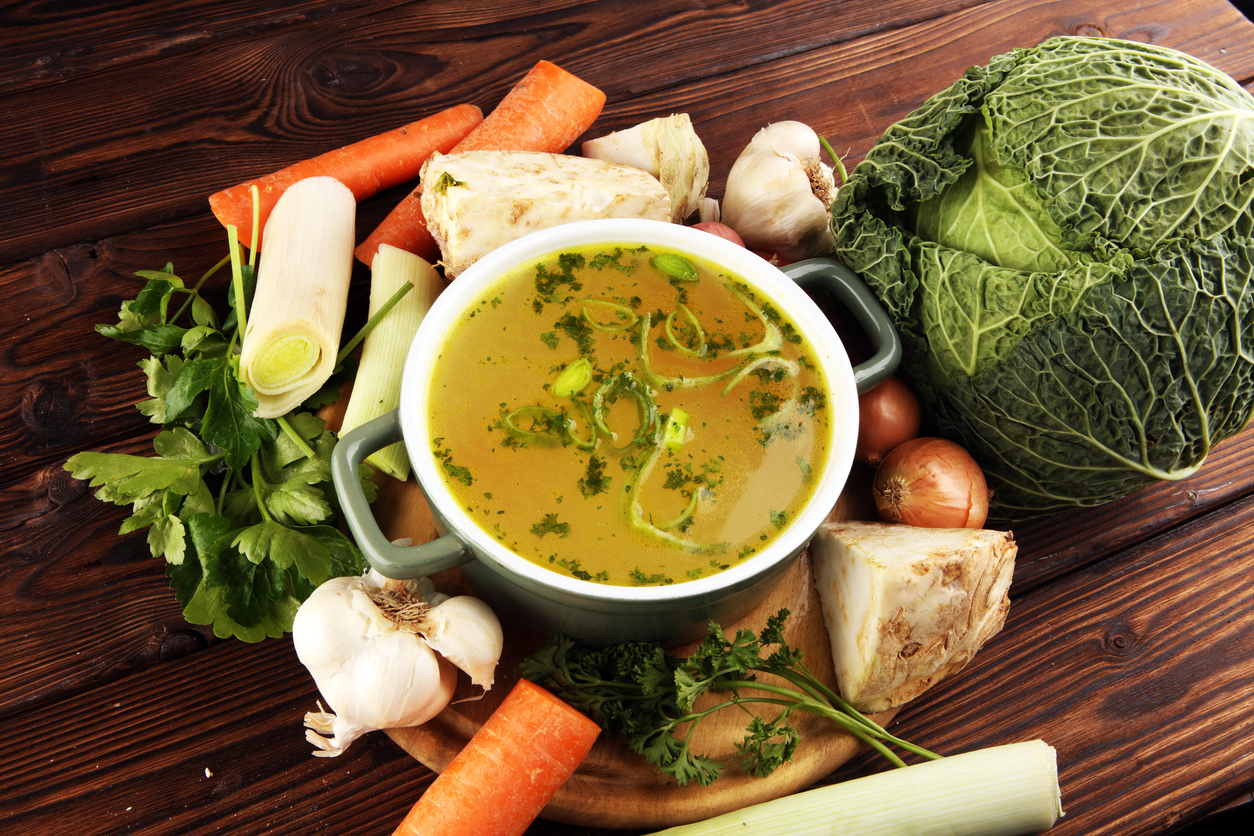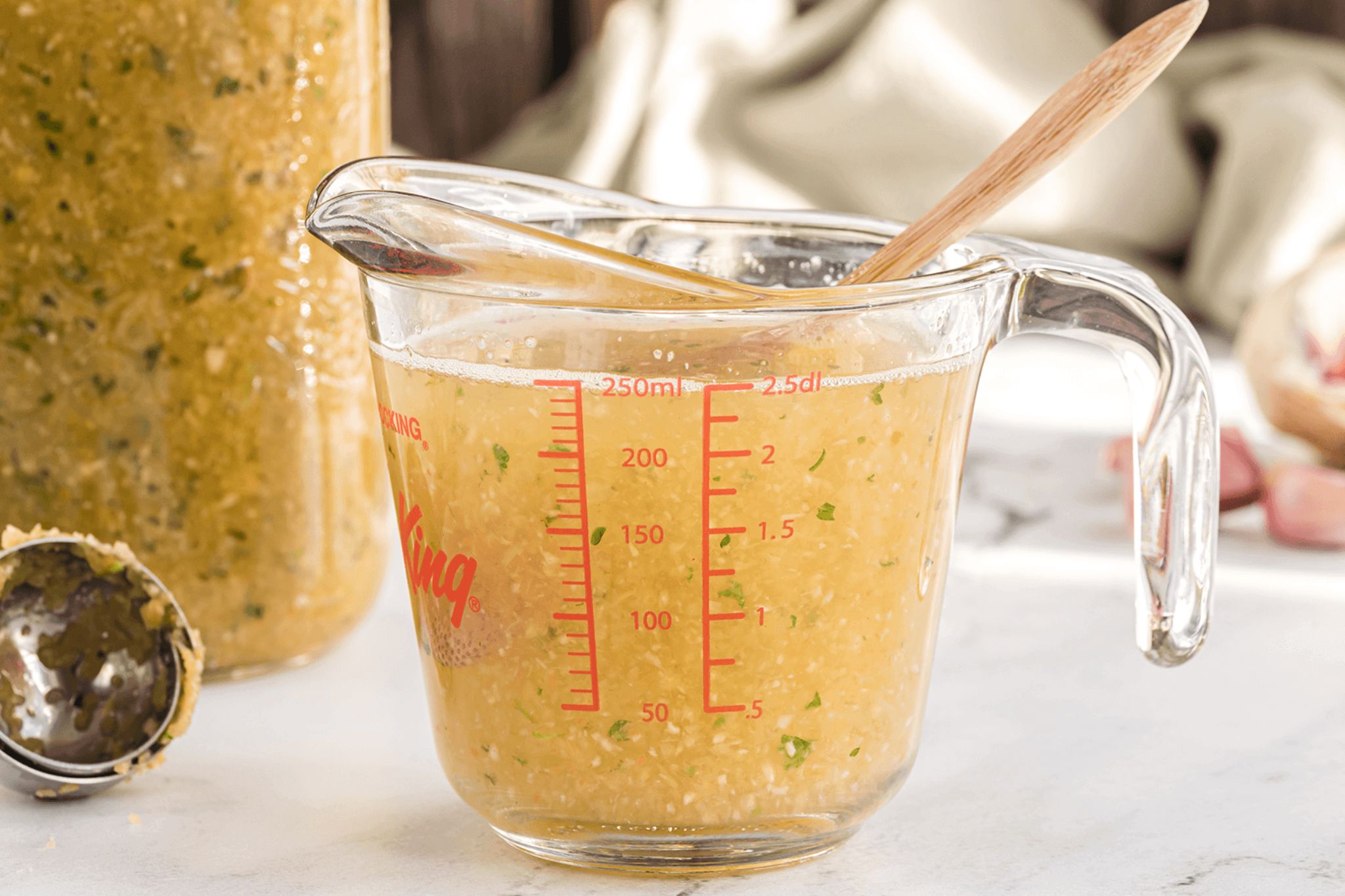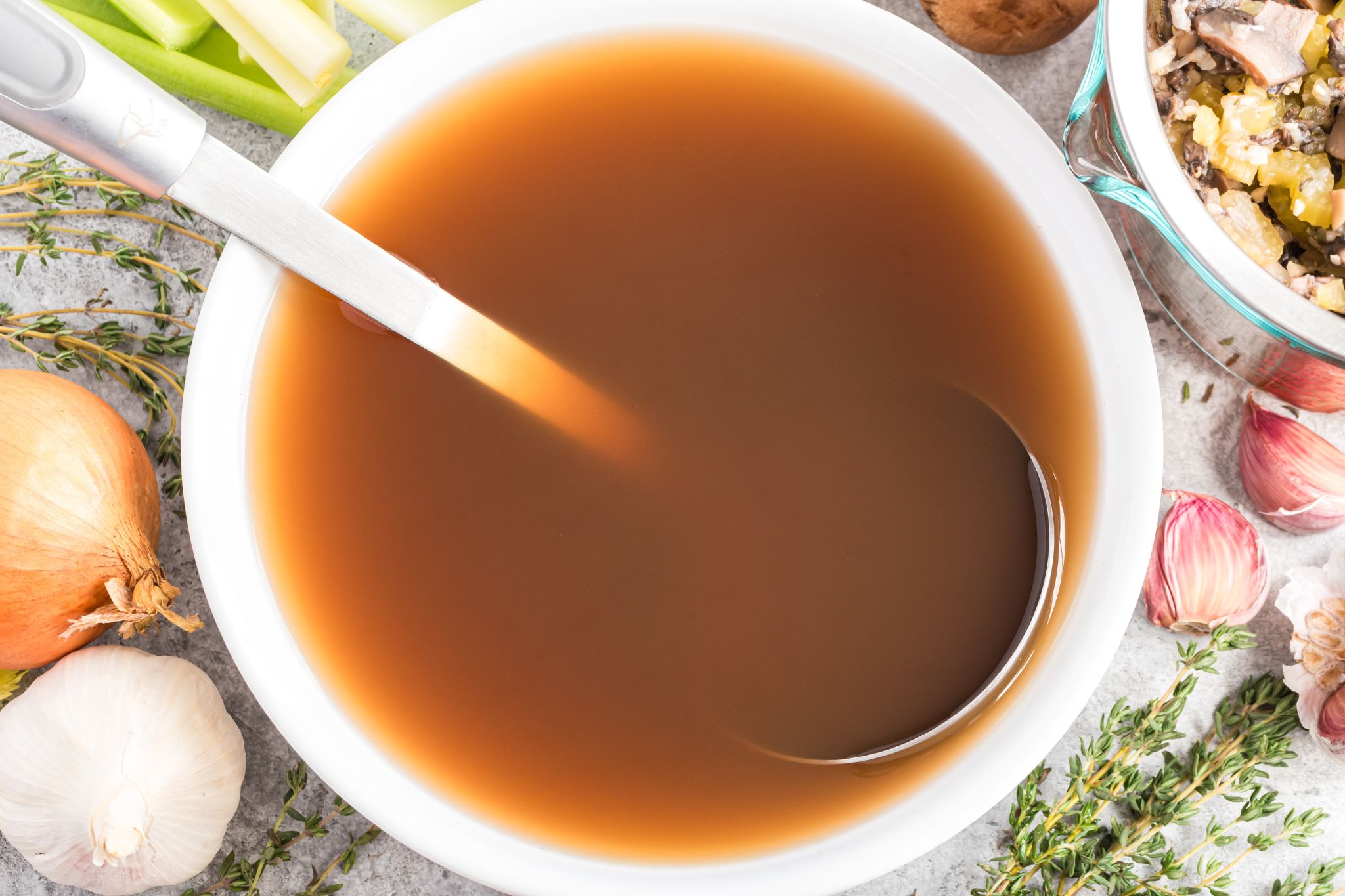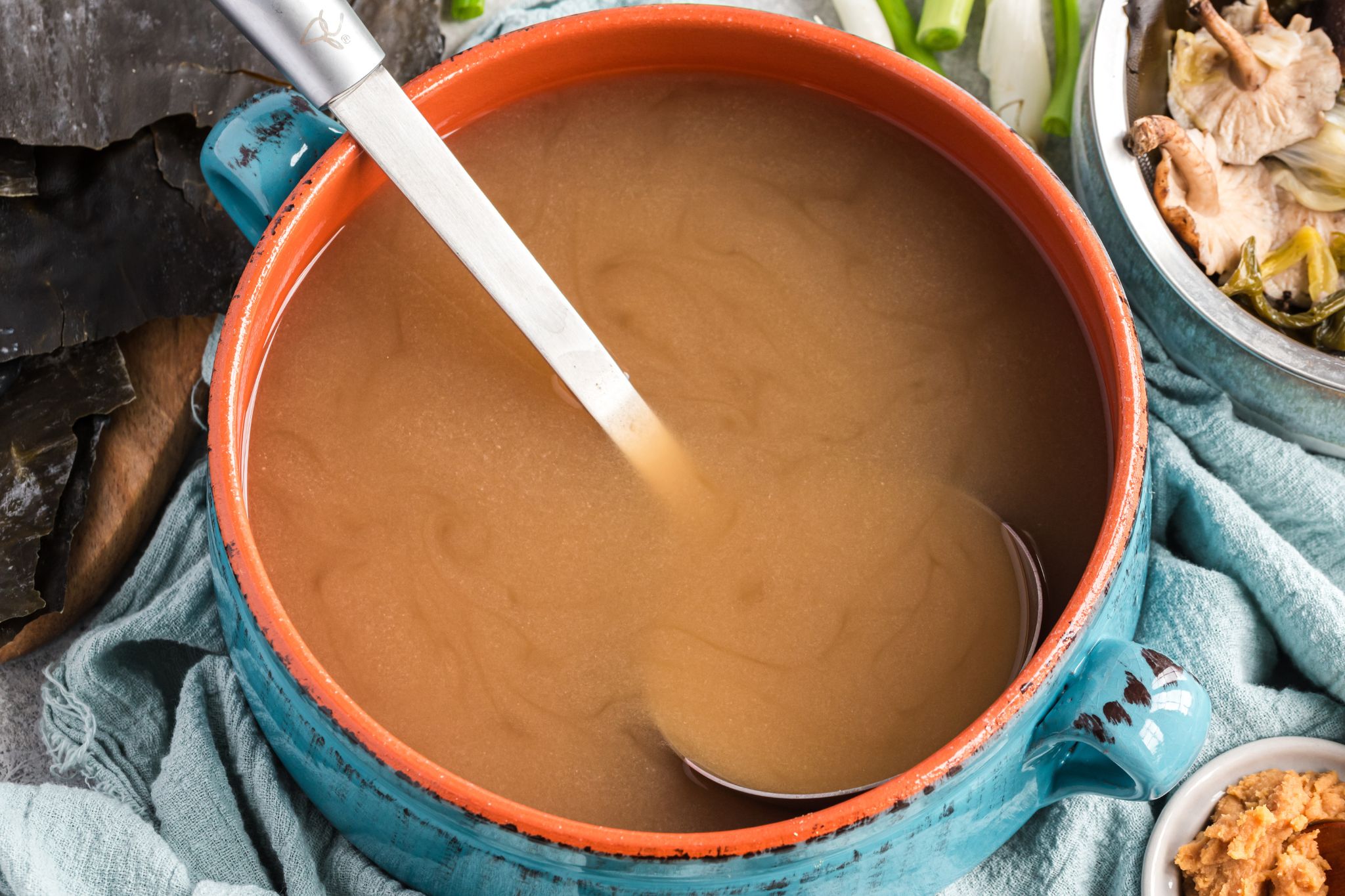You’ve most likely experienced the savory flavor of vegetable broth if you’ve ever made, purchased, or consumed a veggie-based soup. Even if soup isn’t your thing, but a casserole, chili, or rice dish is, then you can also thank vegetable broth, in part, for the comforting flavor.
Vegetable broth is a cornerstone in cooking and is used in a variety of dishes (beyond soup!) from Thai to Italian to Japanese cuisine. It serves as the backbone of countless recipes, and, while vegetable broth can easily be made at home, many people rely on store-bought versions.
But making your own vegetable broth is a more nutritious, less wasteful, and more eco-friendly option than store-bought. The old adage “Waste not, want not” comes into play when making vegetable broth at home.
In this article’s included video, you’ll learn step-by-step how to make your own vegetable broth with an emphasis on utilizing vegetable scraps to minimize waste while maximizing nutrition and flavor.
Why Make Your Own Vegetable Broth
Optimize Nutrition

Because you get to select the ingredients that go into your homemade vegetable broth, it’s oftentimes more nutritious than broth you can purchase from the store. For example, many store-bought vegetable broth brands include a combination of carrot, celery, and allium vegetables (like onions, leeks, and garlic) — also known as mirepoix in French cooking — and maybe mushrooms. Rarely do they include much more vegetable variety than that.
Many components of various vegetables are also completely left out of store-bought vegetable broth. These scraps that are often thrown away are just as nutritious or, in some cases, even more nutritious, than the parts we are accustomed to consuming.
For example, when you think of broccoli you probably think of the florets. But did you know that broccoli leaves are higher in carotenoids, chlorophyll, vitamins E and K, phenolic content, and antioxidant activity compared to the florets? Broccoli leaves are, in their own right, true superfoods, and it would be sad to let them go to waste. Instead, toss them into your soups or stews, and add them to your homemade veggie stock!
Some broth brands may also add cane sugar or dextrose (another name for sugar), natural flavors, preservatives, and loads of sodium unless you choose an unsalted or low-sodium version. By making your own vegetable broth, you have the power to choose what goes into your soup and what stays out of it.
Be Kinder to the Planet
One of my personal favorite things to do when it comes to creating less kitchen waste is to keep a catchall bin in the fridge where all my food scraps live. If a recipe calls for ½ cup of carrots and a half carrot remains, it goes into the food scrap bin (I know, I know — I could easily turn this carrot into a snack by munching on it. But, to be honest, I just don’t love the flavor of raw carrots!). By the end of the week, the bin may be full of carrots, celery pieces, onion skin, and more — basically, enough scraps to make a delicious and nutritious broth.
You can either simmer the vegetables in water then strain them, or place the vegetables in a food processor and blend until smooth (try this method by making our Veggie Scrap Bouillon recipe). The former version will leave you with a nutrient-dense broth, but you’ll still have the sopping-wet vegetable scraps left. If you’d like to take an extra step toward a zero-waste kitchen, consider composting those scraps.
Also, consider all of the manufacturing that goes into making store-bought broth. Not only are you avoiding single-use containers and plastic packaging, but you’re also avoiding a big part of the carbon footprint that comes from sourcing, packaging, and transporting the vegetables and final product across the country to get to your grocery store.
Save Money

Making your own broth is cost-effective, too, especially when using vegetable scraps. Simply put, your produce purchases go much further when you use all veggie components.
Unfortunately, vegetable broth brands that contain carefully curated organic ingredients without preservatives and other unwanted ingredients are often more expensive. But when you make your own broth, there’s no need to spend on expensive organic or specialty broths.
Personalize and Customize
Finally, making your own broth at home allows you to personalize the flavors. Want umami flavors? Add mushrooms. Prefer naturally salty? Include celery. Looking for a broth to support your immune system? Add a variety of veggies, like leeks, mushrooms, and carrots. If you are making an Asian dish, consider adding ginger or lemongrass to the stock.
And whatever vegetable broth you create can be used in a wide range of recipes, from soups and stews to savory grains and beyond.
What You’ll Learn in Our “How to Make Vegetable Broth” Video
In the video below, you’ll learn:
- What kinds of vegetables and scraps can be used to make broth
- How to prepare the vegetables
- Various cooking methods, including stovetop, slow cooker, and pressure cooker
- How to strain and store your broth
I think you’ll find these methods simple and easily adapted to fit any kitchen!
https://www.youtube.com/watch?v=i8mEBGXtYmM
Homemade Veggie Broth Recipes
Get ready to have some nourishing, flavorful fun in the kitchen with these wholesome vegetable broth recipes. Each recipe is simple to make, highly adaptable, and can be ready in under 30 minutes. Tap into your creative side and experiment with the ingredients that speak to you. From soups to stews to casseroles, or rice dishes, there’s no limit to what you can cook up with made-from-scratch vegetable broth!
1. Homemade Vegetable Bouillon

Preparing a nourishing homemade vegetable broth means you save on cost, eliminate packaging, and can even get in some fiber that’s often sorely lacking in store-bought broth. Rather than boiling and then simmering vegetable scraps (which is another way to make homemade broth), in this recipe, you’ll use the entire veggie by adding it to your food processor to make a bouillon. Within minutes you’ll have a deeply flavorful and nutrient-dense bouillon cube that is ready to go when you need to prepare your favorite homemade veggie soup!
2. Savory Mushroom Broth

One of the benefits of making homemade broth is that you get to decide the nutritional value, flavor profile, and ingredients! Savory Mushroom Broth is an intensely flavored umami-rich broth that is brimming with antioxidants, packed with B vitamins, and high in minerals such as selenium, potassium, and copper. What’s more, it makes a delightful base for your favorite soup, stew, casserole, or side dish. And because of all the intense umami flavor this broth imparts, you’ll be finding plenty of ways to use it!
3. Umami Vegan Dashi

Pull out the Instant Pot and get ready to prepare this profoundly flavorful and highly nourishing Umami Vegan Dashi in minutes! Prepping homemade broth in the Instant Pot not only helps get it done quickly, but thanks to the pressure cooking, the flavors become concentrated as if the broth had been simmering away for hours. By taking advantage of the Instant Pot’s magic, we’ve created an ultra-nourishing and mineral-rich broth using green onion, shiitake mushrooms, and seaweed. Together with the miso paste, this dashi makes a delicious and soothing stock that’s great for your health and your taste buds.
Cook Up a Batch of Broth
Vegetable broth’s versatility in flavoring a variety of dishes from around the world makes it a plant-based pantry essential. And making your own vegetable broth can be an empowering activity that allows you to take charge of your health and make a positive impact on the planet. By creating a broth from scratch (or following one of the included recipes), you can nourish your body, prevent food waste, and take part in a sustainable cooking practice.
Now that you’ve learned the basics of how to make vegetable broth, explore new culinary heights by cooking with it and coming up with your own DIY broth recipes.
Tell us in the comments:
-
Have you ever made vegetable broth from scratch?
-
What did you learn from the video?
-
Which veggie broth recipe will you try next?
Featured Image: iStock.com/beats3

